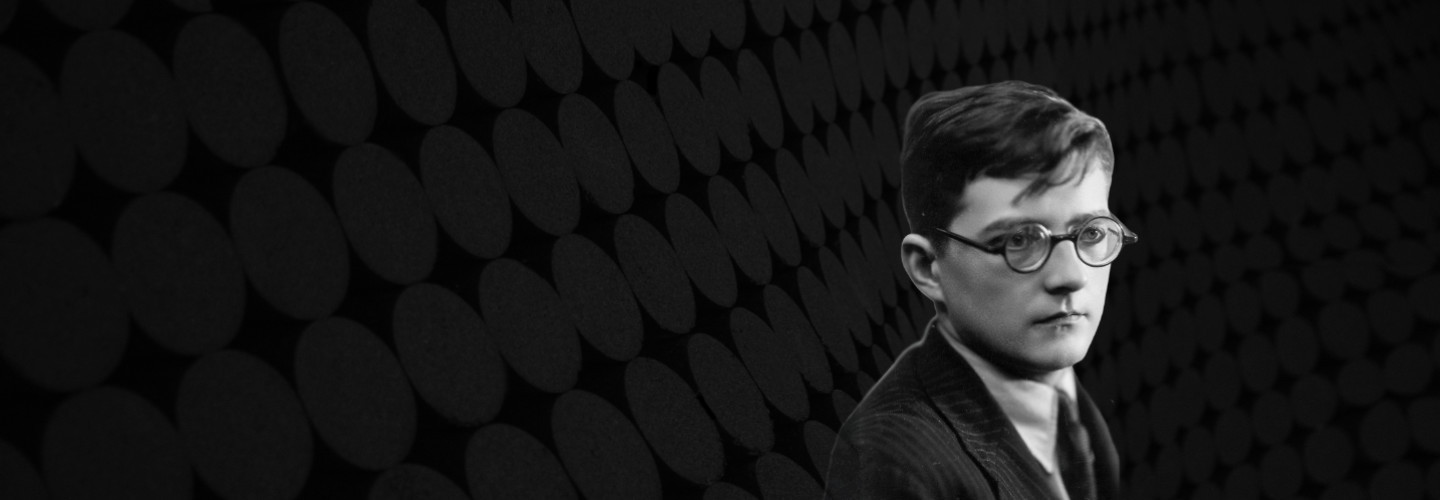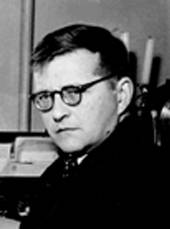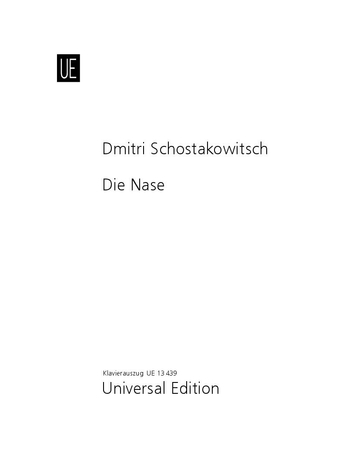

Dmitri Schostakowitsch
Die Nase
Short instrumentation: 1 1 1 1 - 1 1 1 0 - Balalaika, Kleine Domra, Kleine Domra, Alt-Domra, Alt-Domra, 1. Teil d. Part (frz.), 2. Teil d. Part (frz.), perc(9), hp(2), pno, str(18 16 14 12 10)
Duration: 105'
Libretto von: Alexandr Preis, Jewgeni Samjatin, Dmitri Schostakowitsch, Georgi Ionin
Übersetzer: Helmut Wagner, Edward Downes, Michel Ancey, Merle Puffer, Karl Heinz Füssl, Fedele D´Amico
Klavierauszug von: Karl Götz
Textvorlage: Nikolai W. Gogol
Choir: SATB
Roles:
Platon Kusmitsch Kowaljoff: baritone
Iwan Jakowlewitsch: bass baritone
Ein Wachtmeister: very high tenor
Iwan: tenor
The nose in the form of a state council: tenor
Alexandra Grigorjewna Podtotschina: mezzo-soprano
their daughters: sopranos
3 little roles
some speaking parts
17 soloists from the choir
Instrumentation details:
flute (+piccolo, Afl.(G))
oboe (+c.a.)
clarinet in B (+Eb- and bass cl.)
bassoon (+cbsn.)
horn in F
trumpet in B (+Kornett)
trombone
1. harp
2. harp
pno
Balalaika(4) (altosrnativ: 1. small Domra
2. small Domra
1. alto-Domra
2. alto-Domra)
perc(9)
violin I(9)
violin II(8)
viola(7)
violoncello(6)
contrabass(5)
Schostakowitsch - Die Nase
Printed/Digital
Translation, reprints and more

Print-On-Demand

Dmitri Schostakowitsch
Schostakowitsch: Die Nase (rus.) - op. 15Type: Klavierauszug
Language: Russisch

Dmitri Schostakowitsch
Schostakowitsch: The Nose - op. 15Type: Klavierauszug
Language: Deutsch

Dmitri Schostakowitsch
Schostakowitsch: The Nose - op. 15Type: Libretto/Textbuch
Language: Deutsch
Sample pages
Audio preview
Work introduction
With his first opera The Nose, youngblood Shostakovich produced a work typical of the Roaring Twenties, shortly after Krenek’s Jonny spielt auf and almost simultaneously with Weill’s Threepenny Opera. Inspired by Gogol’s sardonically absurd, socially critical story, Shostakovich composed spirited, lighthearted music in 16 short, consecutive scenes. Yet all of its various styles – circus music, galopp, polka, Russian Orthodox melody, folk tunes (there are four balalaikas in the orchestra) – became material for an annihilating critique of Russian society, still hierarchical and obsessed with authoritarianism 70 years after Gogol’s death.
